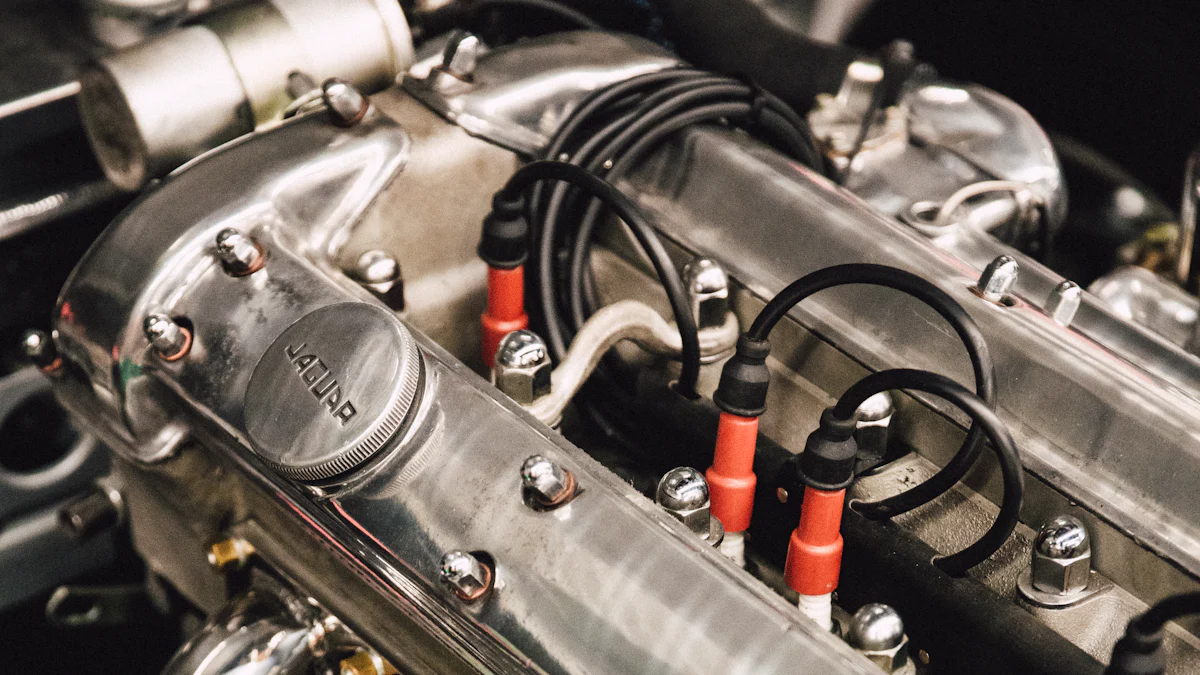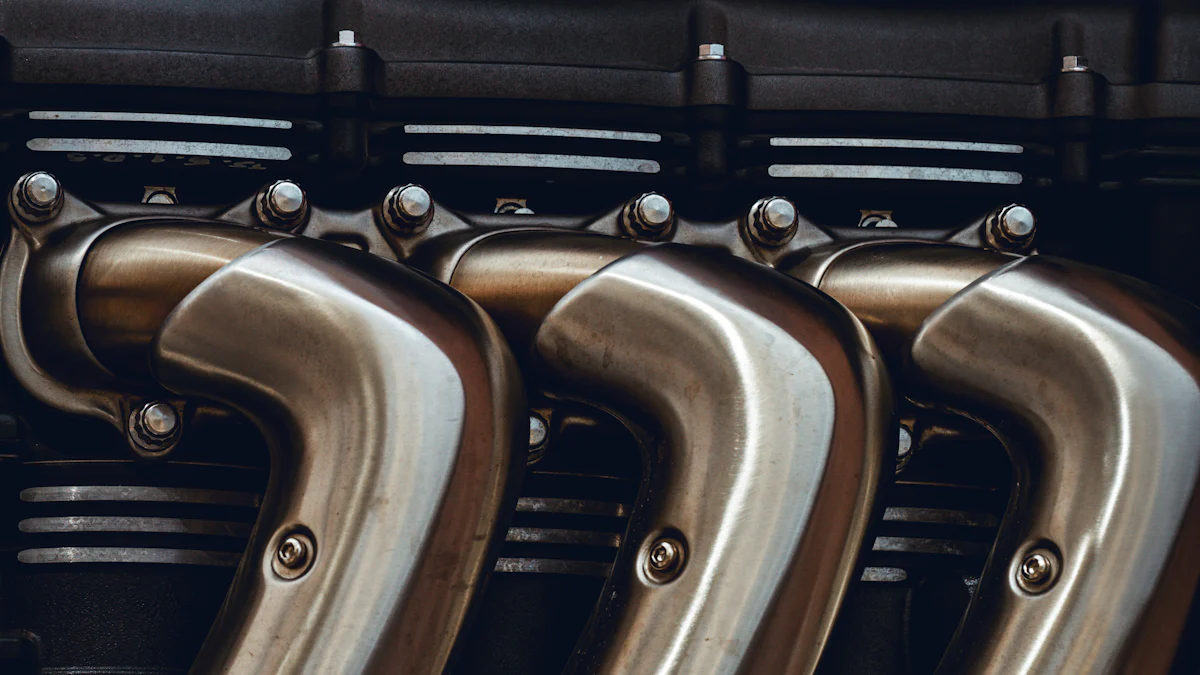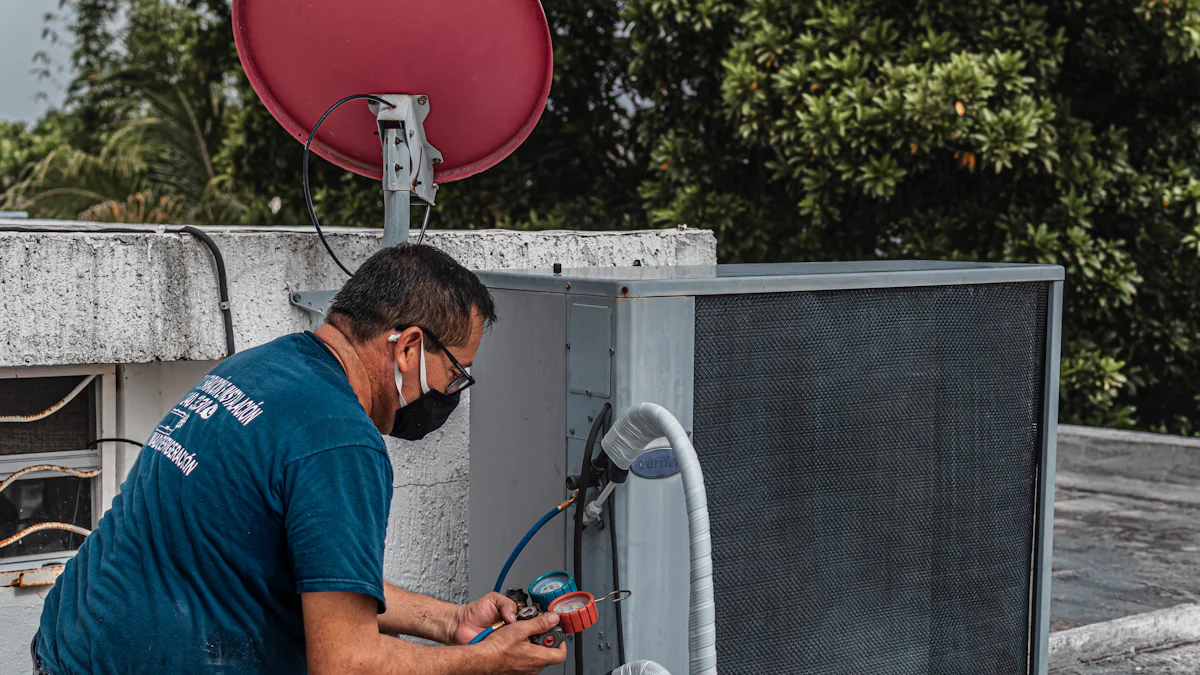
The 2015 Kia Optima exhaust manifold is a vital component that significantly impacts both performance and emissions. By efficiently collecting hot gases from the engine cylinders, the engine exhaust manifold plays a crucial role in enhancing engine performance and reducing harmful emissions. Upgrading this component can lead to improved fuel efficiency, reduced engine noise, and an extended engine lifespan. Ignoring issues with the exhaust manifold can result in costly problems and potential engine rebuilds due to common causes like corrosion.
Overview of the 2015 Kia Optima Exhaust Manifold
The 2015 Kia Optima exhaust manifold serves a critical function in the vehicle’s operation, playing a pivotal role in both emissions control and engine performance. By efficiently channeling exhaust gases away from the engine cylinders, the engine exhaust manifold contributes significantly to reducing harmful emissions that can impact both the environment and engine efficiency.
Function and Importance
Reducing Emissions
The primary objective of the 2015 Kia Optima exhaust manifold is to minimize the release of harmful pollutants into the atmosphere. By collecting and directing exhaust gases towards the catalytic converter, this component facilitates the conversion of toxic elements into less harmful byproducts. This process aligns with environmental regulations and ensures that the vehicle operates within acceptable emission standards.
Enhancing Performance
Beyond its environmental impact, the 2015 Kia Optima exhaust manifold also plays a crucial role in optimizing engine performance. By expelling exhaust gases efficiently, this component helps maintain proper back pressure levels within the engine, enhancing combustion efficiency and overall power output. A well-functioning exhaust manifold contributes to smoother engine operation and improved fuel economy.
Design and Material
Common Materials Used
Manufacturers typically construct exhaust manifolds using durable materials such as cast iron or stainless steel to withstand high temperatures and corrosive environments effectively. The choice of material directly influences the component’s longevity and performance under varying operating conditions. In the case of the 2015 Kia Optima, high-quality materials ensure durability and reliability for extended periods.
Design Variations
Exhaust manifolds come in various designs tailored to specific engine configurations and performance requirements. The design variations may include integrated catalytic converters for enhanced emission control or optimized airflow patterns for improved engine efficiency. These design elements are carefully engineered to maximize both environmental compliance and overall vehicle performance.
Components of the Exhaust Manifold

Primary Components
Manifold Pipes
The Manifold Pipes are integral parts of the 2015 Kia Optima exhaust manifold, responsible for transporting exhaust gases from the engine cylinders to the catalytic converter. These pipes are meticulously designed to withstand high temperatures and corrosive elements, ensuring optimal performance and longevity. By maintaining a secure connection between the engine and the exhaust system, Manifold Pipes play a vital role in controlling emissions and enhancing overall engine efficiency.
Gaskets and Seals
Gaskets and Seals serve as essential components within the 2015 Kia Optima exhaust manifold, providing airtight seals between various sections of the exhaust system. These components prevent gas leaks, ensuring that exhaust gases flow smoothly through the system without any loss of pressure or contamination. Properly installed Gaskets and Seals contribute to reducing noise levels, improving fuel economy, and maintaining compliance with emission standards.
Additional Parts
Heat Shields
Heat Shields are crucial accessories accompanying the 2015 Kia Optima exhaust manifold, designed to protect surrounding components from excessive heat exposure. These shields act as barriers, preventing heat transfer to sensitive parts of the vehicle’s undercarriage or engine bay. By effectively dissipating heat away from critical areas, Heat Shields help maintain optimal operating temperatures, prolonging the lifespan of both the exhaust system and adjacent components.
Mounting Hardware
The Mounting Hardware included with the 2015 Kia Optima exhaust manifold comprises various bolts, nuts, brackets, and clamps essential for secure installation. These hardware components ensure that the exhaust manifold is firmly attached to the engine block or cylinder head, preventing vibrations or dislodgment during operation. Properly secured with high-quality Mounting Hardware, the exhaust manifold maintains structural integrity, minimizing potential leaks or damage over time.
Installation Process

When it comes to the installation process of the 2015 Kia Optima exhaust manifold, meticulous attention to detail is paramount. Proper installation not only ensures optimal performance but also contributes to the longevity of the vehicle’s engine. The following steps outline the necessary procedures for a successful installation:
Preparation Steps
Tools Required
- Wrench Set: A set of wrenches in various sizes is essential for loosening and tightening bolts during the installation process.
- Socket Set: Different sockets will be needed to fit the specific bolt sizes on the exhaust manifold and other components.
- Torque Wrench: To ensure that all bolts are tightened to the manufacturer’s specifications, a torque wrench is indispensable.
- Safety Glasses and Gloves: Protecting your eyes and hands from debris and sharp edges is crucial for a safe installation process.
Safety Precautions
- Work in a Well-Ventilated Area: Exhaust fumes can be harmful, so working in a well-ventilated space or outdoors is recommended.
- Allow Sufficient Cooling Time: Before starting the installation, make sure that the engine has cooled down to prevent burns or injuries.
- Support the Vehicle Securely: Use jack stands or ramps to elevate and secure the vehicle before crawling underneath it for installation.
- Disconnect Battery: As a safety measure, disconnecting the battery will prevent any electrical mishaps during the installation process.
Step-by-Step Guide
Removing the Old Manifold
- Disconnect O2 Sensors: Start by locating and disconnecting any oxygen sensors attached to the old exhaust manifold.
- Unbolt Manifold Flange: Using your wrench set, carefully unbolt the manifold flange connections from both ends.
- Support Manifold: Before completely removing it, support the old manifold with one hand to prevent it from falling unexpectedly.
- Remove Old Gaskets: Take out any old gaskets or seals between the manifold and engine block, ensuring a clean surface for reinstallation.
Installing the New Manifold
- Inspect New Manifold: Before installing, inspect the new exhaust manifold for any damages or missing components.
- Apply Sealant or Gasket: Depending on manufacturer recommendations, apply sealant or place new gaskets in position for a proper seal.
- Secure Manifold in Place: Carefully align and secure the new manifold onto the engine block using mounting hardware provided with precision torque settings.
- Reconnect O2 Sensors: Once secured, reconnect any oxygen sensors removed earlier back into their respective ports.
Properly following these steps guarantees an efficient and effective installation of your 2015 Kia Optima exhaust manifold, ensuring optimal performance and emission control.
Maintenance Tips
Regular Inspections
Inspecting the 2015 Kia Optima exhaust manifold regularly is essential to ensure optimal performance and prevent potential issues that may arise over time. By conducting routine checks, owners can identify early signs of wear or damage, allowing for timely maintenance and avoiding costly repairs. Here are key aspects to consider during regular inspections:
Signs of Wear
- Visual Examination: Start by visually inspecting the exhaust manifold for any visible signs of corrosion, rust, or discoloration, which may indicate deterioration due to heat exposure.
- Check for Cracks: Thoroughly examine the manifold surface for any cracks or fissures that could lead to gas leaks or decreased efficiency in exhaust gas expulsion.
- Listen for Abnormal Noises: Pay attention to any unusual noises coming from the engine bay while the vehicle is running, as this could signal a potential issue with the exhaust system.
- Monitor Engine Performance: Keep track of changes in engine performance, such as reduced power output or increased fuel consumption, which may be linked to exhaust manifold problems.
Cleaning Methods
Maintaining a clean 2015 Kia Optima exhaust manifold is crucial for preserving its functionality and prolonging its lifespan. Regular cleaning not only enhances performance but also prevents the buildup of contaminants that can impact overall engine efficiency. Follow these cleaning methods to keep your exhaust manifold in top condition:
Steps for Cleaning:
- Cool Down Period: Before cleaning, allow sufficient time for the engine to cool down completely to avoid burns or injuries during the process.
- Remove Manifold: If necessary, carefully detach the exhaust manifold from the engine block following proper disassembly procedures outlined in your vehicle manual.
- Use Degreaser: Apply a suitable degreaser to remove built-up grease and dirt on the manifold surface, ensuring thorough coverage and penetration into crevices.
- Scrubbing Technique: Gently scrub the manifold with a soft-bristled brush or cloth to dislodge stubborn residues without causing damage to the material.
- Rinse Thoroughly: After scrubbing, rinse off the degreaser and loosened debris with clean water, ensuring all cleaning agents are removed from the surface.
- Dry Completely: Allow the exhaust manifold to air dry completely before reinstallation to prevent moisture-related issues that could affect performance.
Common Issues and Solutions
Understanding common problems associated with the 2015 Kia Optima exhaust manifold is crucial for prompt identification and resolution of issues that may arise during ownership. By recognizing symptoms early on, owners can take proactive measures to address concerns effectively before they escalate. Here are some prevalent issues and their corresponding solutions:
Leaks and Cracks
- Symptoms: Noticeable hissing sounds coming from under the hood or visible smoke emissions may indicate leaks in the exhaust manifold.
- Solution: Address leaks promptly by replacing damaged gaskets or seals and tightening connections securely to prevent further gas escape.
Performance Issues
- Symptoms: Decreased engine power output, rough idling, or increased fuel consumption can be indicative of underlying performance issues related to the exhaust system.
- Solution: Conduct a comprehensive inspection of all components connected to the exhaust manifold, including sensors and catalytic converters, to pinpoint areas requiring maintenance or replacement.
Performance Upgrades
When considering aftermarket options for enhancing the performance of the 2015 Kia Optima exhaust manifold, drivers have a plethora of choices to explore. One notable avenue for improvement lies in opting for high-performance manifolds specifically designed to elevate the vehicle’s capabilities. These upgraded manifolds are meticulously crafted to maximize airflow efficiency, resulting in a more responsive engine and heightened overall performance.
Aftermarket Options
High-Performance Manifolds
Investing in high-performance manifolds can yield substantial benefits for Kia Optima owners seeking to elevate their driving experience. These specialized components are engineered with precision to optimize exhaust gas flow, thereby enhancing engine power output and responsiveness. By replacing the stock exhaust manifold with a high-performance variant, drivers can unlock the full potential of their vehicle’s engine, translating into improved acceleration and a more exhilarating driving dynamic.
Compatibility with Other Upgrades
One advantage of upgrading to a high-performance exhaust manifold is its seamless compatibility with other aftermarket enhancements. Whether integrating a new intake system or installing a performance chip, the 2015 Kia Optima exhaust manifold serves as a foundational component that complements various upgrades. This synergy among different aftermarket modifications ensures harmonious operation within the engine system, allowing drivers to achieve enhanced performance gains across multiple fronts.
Benefits of Upgrading
Increased Horsepower
By transitioning to a high-performance exhaust manifold, Kia Optima enthusiasts can experience a noticeable boost in horsepower output. The optimized design and superior materials used in these upgraded manifolds facilitate smoother exhaust gas expulsion, leading to enhanced combustion efficiency and increased power generation. With heightened horsepower at their disposal, drivers can enjoy improved acceleration, better towing capacity, and an overall more spirited driving experience behind the wheel of their Kia Optima.
Improved Fuel Efficiency
In addition to elevating horsepower levels, upgrading the 2015 Kia Optima exhaust manifold can also result in enhanced fuel efficiency. The enhanced airflow dynamics provided by high-performance manifolds contribute to more efficient fuel combustion within the engine cylinders. As a result, drivers may observe reduced fuel consumption during both city commutes and highway drives. This improvement not only translates into cost savings at the pump but also aligns with eco-conscious driving practices by minimizing carbon emissions.
- An exhaust manifold serves as a crucial component in reducing emissions and noise levels in vehicles. It gathers hot gases from the engine cylinders, allowing the engine to operate more efficiently. By directing these gases away from the engine, the manifold contributes to improved engine performance and reduced back pressure.
- Kia Optima owners should prioritize regular inspections of their exhaust manifolds to ensure optimal functionality. Timely maintenance and cleaning can prevent issues and prolong the lifespan of this vital component. Upgrading to high-performance manifolds offers increased horsepower and improved fuel efficiency, enhancing the overall driving experience for Kia Optima enthusiasts.
Post time: Jun-14-2024



